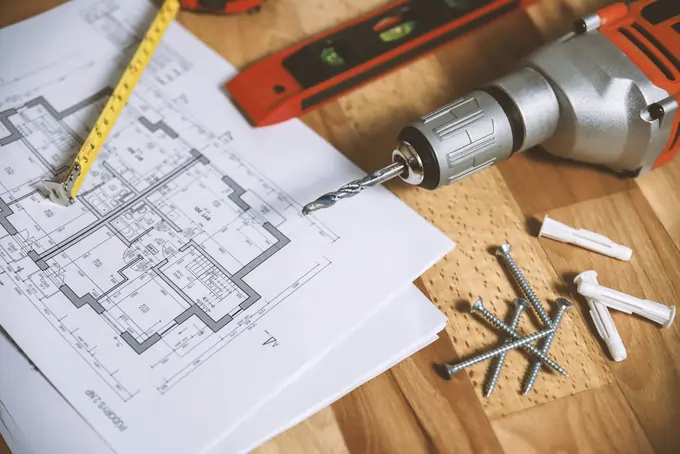In the fast-paced world of commercial real estate, understanding the value of a property is crucial. Broker Opinion of Value (BOV) is a key tool in this process.
This article will dive deep into the world of BOV in commercial real estate, exploring its importance, accuracy, and process.
Whether you’re a seasoned investor or just starting out, this guide will provide valuable insights into how BOVs shape the industry.
What is a BOV in Commercial Real Estate?
A BOV, or Broker Opinion of Value, is an estimate provided by a real estate broker to help determine a property’s value.
It’s a critical tool in commercial real estate, offering a quick and cost-effective way to assess property worth.
But how does it really work?
Let’s break it down.
Understanding the Basics of BOV
A BOV is an expert opinion on a property’s value, based on market data and the broker’s experience.
It’s less formal than an appraisal but still provides valuable insights.
Real estate brokers use their knowledge of the local market to estimate fair market value.
This estimate helps potential buyers, sellers, and investors make informed decisions.
How Does a Broker Opinion of Value Differ from an Appraisal?
While both provide property value estimates, a BOV and an appraisal have key differences.
An appraisal is conducted by a certified appraiser and follows strict guidelines.
A BOV, on the other hand, is less formal and not held to the same standard as an appraisal.
Appraisals are typically more detailed and time-consuming, while BOVs offer quicker results.
When is a Broker Opinion of Value Used in CRE?
BOVs are commonly used in various commercial real estate scenarios.
They’re helpful when considering a bid for a property or evaluating potential investments.
Lenders often request BOVs for refinancing or assessing loan collateral.
Property owners may seek a BOV to determine listing prices or for tax assessment appeals.
How Do Real Estate Brokers Determine the Value of a Property?

Real estate brokers use several methods to estimate a property’s value.
These include analyzing comparable sales, assessing market conditions, and evaluating the property’s potential income.
Let’s explore these factors in more detail.
Factors Affecting Market Value in Commercial Real Estate
Location is often the most significant factor in determining a property’s value.
The condition of the property, including its age and any recent renovations, also plays a crucial role.
Current and potential income from tenants is another key consideration.
Market trends and economic conditions in the area can greatly impact value.
The Importance of Comparable Properties and Comps
Brokers look at similar properties in the area that have recently sold.
These “comps” provide a baseline for estimating the subject property’s value.
Factors like size, location, and condition are compared to adjust the estimated value.
The more recent and similar the comps, the more accurate the BOV is likely to be.
Impact of Market Conditions on BOV
Current market trends can significantly influence a property’s value.
Brokers consider factors like supply and demand in the local market.
Economic indicators, such as job growth and interest rates, also play a role.
Understanding these conditions helps brokers provide more accurate value estimates.
How Accurate is a Broker Price Opinion Compared to a Full Appraisal?

While BOVs are valuable tools, it’s important to understand their limitations.
Let’s examine the benefits and drawbacks of BOVs compared to full appraisals.
Benefits of BOV
BOVs are typically faster and less expensive than full appraisals.
They provide a good initial estimate of a property’s value.
BOVs can be particularly useful in rapidly changing markets.
They offer flexibility in terms of scope and detail.
Limitations of a Broker Opinion of Value
BOVs are not as comprehensive as full appraisals.
They may not carry the same weight as an appraisal for legal or financial purposes.
The accuracy can vary depending on the broker’s experience and market knowledge.
BOVs may not consider all factors that could affect a property’s value.
Difference Between BOV and Formal Appraisal
Appraisals are conducted by certified appraisers following strict guidelines.
BOVs are less formal and can be tailored to specific needs.
Appraisals typically take longer and cost more than BOVs.
For some purposes, such as mortgage lending, an appraisal may be required instead of a BOV.
What is the Process of Getting a BOV?
Obtaining a BOV involves several steps and key players.
Understanding this process can help you make the most of this valuable tool.
Steps Involved in a Broker Price Opinion
First, the client requests a BOV from a commercial real estate broker.
The broker then gathers information about the property and its market.
Next, they analyze comparable properties and market trends.
Finally, the broker prepares a report with their value estimate and supporting data.
The Role of a Real Estate Broker
The broker’s expertise is crucial in developing an accurate BOV.
They use their market knowledge to interpret data and trends.
Brokers often visit the property to assess its condition firsthand.
Their experience helps them consider factors that may not be apparent in raw data.
How Long Does a BOV Take?
The time to complete a BOV can vary depending on the property and market.
Typically, a BOV takes between three to six days to complete.
More complex properties or markets may require additional time.
In urgent situations, some brokers can provide preliminary estimates more quickly.
Why Do Lenders and Investors Rely on BOVs?
BOVs play a crucial role in commercial real estate financing and investment decisions.
Let’s explore how different stakeholders use this valuable tool.
The Role of BOV in Financing
Lenders often use BOVs to assess the value of potential loan collateral.
They provide a quick and cost-effective way to evaluate property values.
BOVs can help lenders determine appropriate loan amounts and terms.
For refinancing, BOVs offer updated value estimates without the need for a full appraisal.
Utilizing BOV for Real Estate Investment
Investors use BOVs to quickly assess potential acquisition targets.
They provide a starting point for negotiations and due diligence.
BOVs can help investors identify undervalued properties or markets.
For portfolio management, BOVs offer a way to track changes in property values over time.
How BOV Helps in Decision Making
BOVs provide a quick snapshot of a property’s potential value.
They offer insights into market trends and property performance.
BOVs can help identify factors that may impact future value.
By providing a range of values, BOVs help stakeholders understand potential risks and rewards.
Summary
In conclusion, Broker Opinions of Value are essential tools in commercial real estate.
They offer quick, cost-effective property value estimates based on expert knowledge.
While not as comprehensive as full appraisals, BOVs provide valuable insights for various stakeholders.
Understanding how BOVs work and their limitations can help you make more informed real estate decisions.
Whether you’re a lender, investor, or property owner, mastering the use of BOVs can give you a competitive edge in the commercial real estate market.
FAQs
What is a bov in real estate?
In real estate, a bov or broker’s opinion of value is a quick, informal way for a broker to help a potential client get an estimate of the value of a property. Unlike an appraisal, it gives you an idea of how much the property would cost without a more formal evaluation.
A bov report factors in the property condition, commercial properties sold in the last year, and market value estimation among other things. It considers net operating income (noi) and how much income the property can generate, using methods like direct capitalization and discounted cash flow analysis to evaluate the time value of money.
What is the difference between an appraisal and a BOV?
The main difference between an appraisal and a BOV lies in the details and depth of the information. An appraisal report is more detailed, looking at how much similar properties on the market have sold for in the last three to six months.
A BOV requires a broker offering opinion to estimate how much it would cost to sell the potential real estate now, often discounted to the present day value.
BOVs also sometimes include a map of the site and details on tenants currently leasing parts of the property, making it a quicker, high-level glance at the potential sale.
What is the bov value?
Ever wondered what the BOV value is? It’s just a fancy term for valuation in the real estate world. You might come across it during a BPO (Broker Price Opinion) when figuring out the sale price or the overall value of the property. It’s just another part of the whole real estate valuation and cost analysis process!
What is the cap rate of a BOV?
The cap rate of a BOV (Broker’s Opinion of Value) boils down to the property’s NOI (Net Operating Income) divided by its sale price or property value. A real estate broker evaluates similar commercial properties, their valuation, and recently sold properties in the area to figure out this rate.
The valuation provided by the broker is based on comparable sales and the property condition, giving a realistic market value estimation. Unlike a more formal evaluation by an appraiser, a BPO (Broker’s Price Opinion) offers an estimate provided by a real estate broker to help a potential property owner or tenant.


